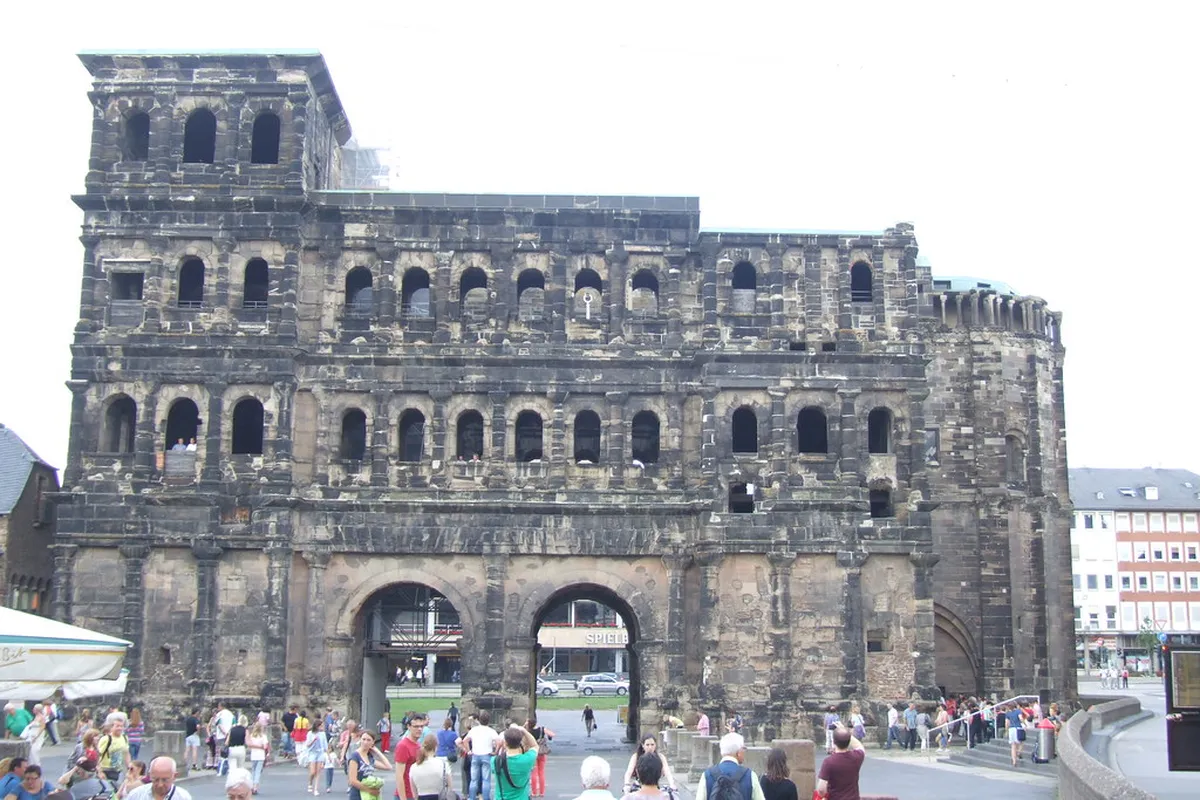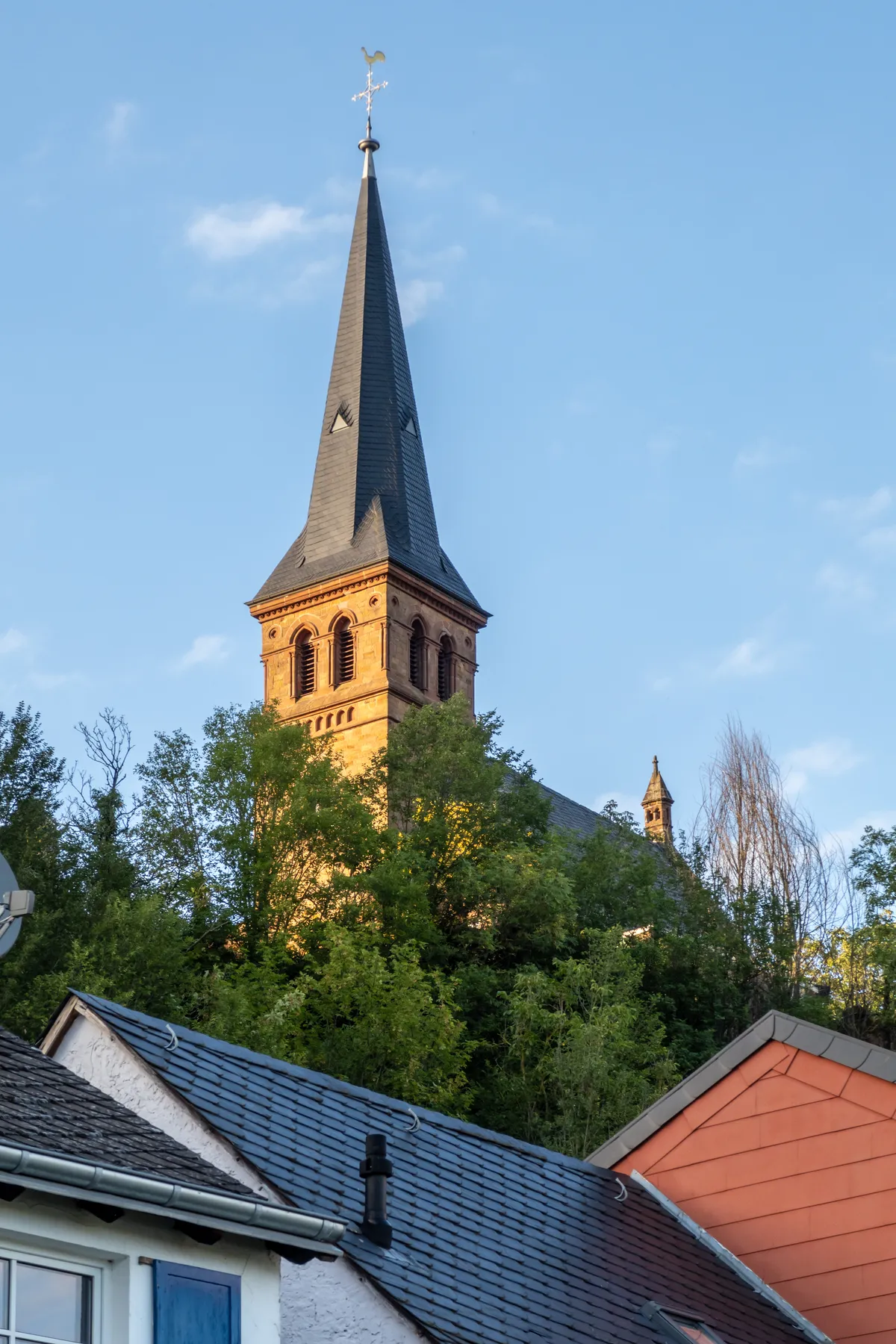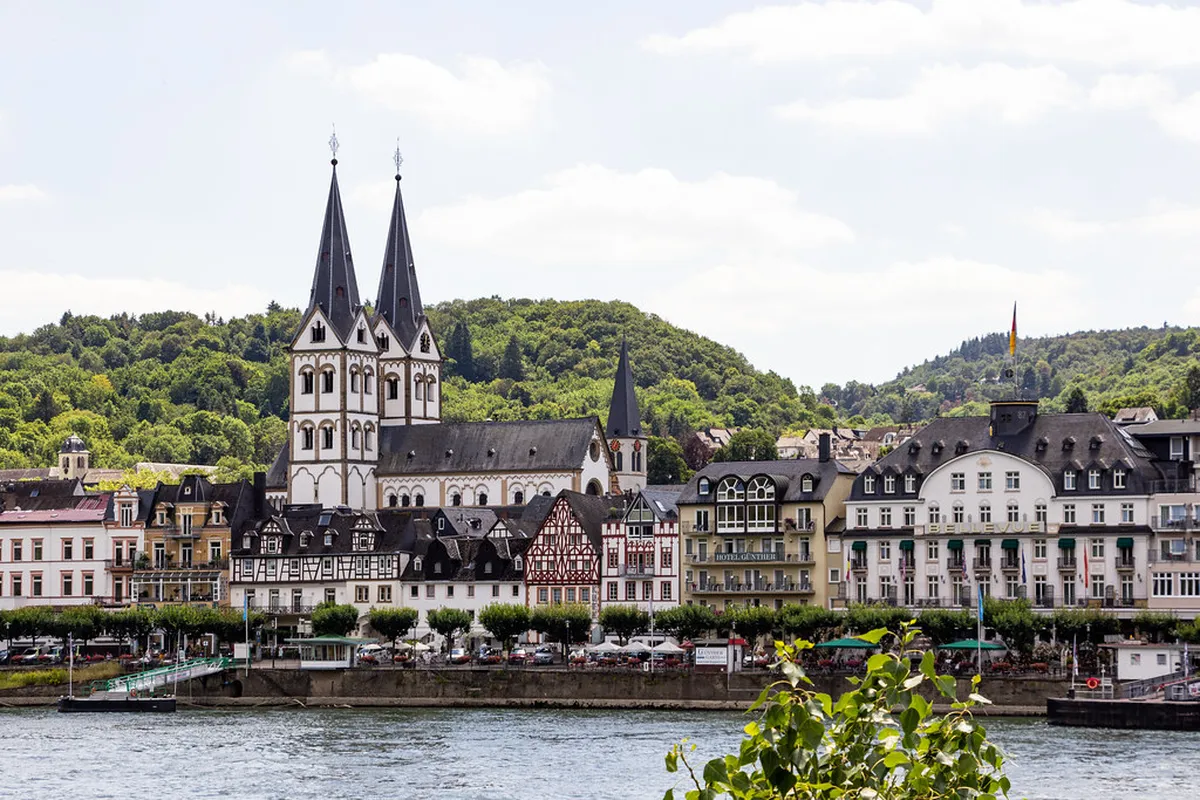
Trier Itinerary: Explore Germany’s Oldest City
Table of Contents
Trier Itinerary: Your Ultimate 3-Day Guide
Trier, renowned as Germany’s oldest city, boasts a rich tapestry of history that dates back over 2,000 years. With its stunning Roman ruins, captivating medieval architecture, and vibrant local culture, this Trier itinerary provides a well-rounded experience that showcases the city’s historical significance and contemporary charm. From the iconic Porta Nigra to the serene Moselle River, this guide will help you navigate the must-visit attractions and hidden gems, ensuring that your travel experience is memorable and fulfilling.
Want to find the best travel deals for this destination? get adventure planner with our adventure planning specialist!
Key Takeaways
- Day 1: Visit the Porta Nigra, the Roman Amphitheater, and the Imperial Baths before relaxing at a local café.
- Day 2: Stroll through the Romanesque Cathedral, explore Hauptmarkt, and take a scenic walk along the Moselle River.
- Day 3: Enjoy the Karl Marx House, visit local wine cellars, and savor a dinner at a traditional German restaurant.
- Best months for visiting: Late spring (May-June) or early autumn (September-October) for pleasant weather and local festivals.
Day 1: Discover the Roman heritage of Trier
Welcome to Trier, a city steeped in history and often regarded as Germany’s oldest city. On your first day, immerse yourself in the Roman heritage of Trier, where remarkable structures narrate tales of the ancient Roman Empire.
Morning: Explore Porta Nigra
Your day begins at the Porta Nigra, an iconic Roman city gate that dates back to the 2nd century AD. This UNESCO World heritage site is a stunning example of Roman architecture. As you arrive, the massive sandstone structure towers over you, creating a breathtaking backdrop perfect for photos. Pro Tip: Make sure to join a guided tour to discover interesting stories behind this magnificent gate.
Mid-Morning: Roman Amphitheater

Next, head to the Roman Amphitheater, one of the best-preserved Roman ruins in Germany. This amphitheater once hosted gladiatorial contests and could seat thousands of spectators. As you wander through the remnants, you’ll feel the echoes of history. Consider picking up an audio guide that detail the amphitheater’s history for an enriching experience.
“The amphitheater is not just a ruin; it’s a glimpse into ancient life.”
Noon: Imperial Baths
No visit to Trier is complete without stopping by the Imperial Baths (Kaiserthermen). Once, these baths were part of a lavish palace complex used by Roman emperors. Walk through the expansive ruins, including the cold and hot bath sections, giving you a sense of how Romans engaged in leisure and hygiene. The site also features an informative museum that enhances your understanding of Roman bath Culture.
Afternoon: Relax at a Local Café
After a morning filled with wanderings and explorations, take a break at one of Trier’s charming local cafés. Experience the laid-back vibe of this historic city while enjoying some local pastries paired with coffee. A popular choice is Café Blum, where you can indulge in traditional German cakes while soaking in the ambiance of the city’s historical surroundings.
Evening: Stroll Along the Moselle River
As the sun sets, make your way to the Moselle River for a peaceful evening stroll. The riverside path offers picturesque views of the city and the vineyards on the opposite bank. Bring your camera, as the charming reflections and changing colors are perfect for stunning photographs. You might even spot local artists capturing the scenic views as you walk.
Conclude your day with a dinner at a traditional German restaurant. Sample local dishes that represent Trier’s regional flavors. Opt for local wines from the Moselle Valley, which are renowned and delectable, adding a perfect touch to your Roman adventure.
As you end your day exploring the Roman heritage of Trier, you’ll have set a fascinating tone for the rest of your trip. Prepare to unveil more wonders as you continue this enchanting journey!
Day 2: Explore the Charming Old Town and Moselle River
On the second day of your Trier itinerary, it’s time to immerse yourself in the enchanting ambiance of Trier’s Old Town and the stunning Moselle River. This blend of history, architecture, and natural beauty is truly a highlight of your visit.
Morning: Visit the Romanesque Cathedral
Begin your day at the Trier Cathedral (Dom St. Peter), a UNESCO World Heritage site. This impressive structure, which dates back to the 4th century, showcases a rich tapestry of architectural styles, including Romanesque and Gothic. Step inside to admire the dazzling stained glass windows and intricate altars. Don’t miss the Holy Tunic, said to be worn by Christ, housed within the cathedral.
After exploring the cathedral, walk over to the nearby Imperial Basilica (Konstantinbasilika), which is the largest wooden barrel-vaulted hall in the world, offering dramatic views inside. The enormous scale of the basilica makes it an unforgettable stop on your itinerary.
Midday: Explore Hauptmarkt
Next, head south towards the vibrant Hauptmarkt, Trier’s main square. Here, you’ll find the stunning Simonstraße, which is home to picturesque half-timbered houses and the famous “Marketplace Fountain” (Markthausbrunnen). This bustling square is an ideal spot for lunch, offering a variety of quaint cafes and restaurants.
Pro Tip: Try the local delicacy, “Trierer Schwenksteak,” a marinated pork steak, often enjoyed with a refreshing glass of Riesling wine from the Moselle region.
Afternoon: Scenic Stroll Along the Moselle River
After a satisfying lunch, enjoy a scenic walk along the Moselle River. The riverside promenade is lined with charming parks and gardens, providing picturesque views of the surrounding hills and vineyards. You may wish to rent a bike or simply stroll at a leisurely pace, soaking in the serene atmosphere.
The area along the river is perfect for a relaxing afternoon, where you can find delightful spots to take photos or simply appreciate the beauty of Trier. If you’re up for more exploration, consider a river cruise which offers an alternative perspective of the city’s backdrop.
Evening: End the Day at a Local Wine Cellar
As the sun sets, venture into one of the local wine cellars, such as the Weinhaus Faber or Benediktus-Wein. Here, you can taste some of the best wines in the region, particularly the renowned Riesling. Gain insights from local sommeliers about the winemaking process and the unique characteristics of Moselle wines.
To round out your day, opt for dinner at a traditional German restaurant. Enjoy hearty German fare while engaging in conversations about your day’s Adventures.
Key Insight: Exploring Trier’s Old Town and the Moselle River provides a rich blend of history, culture, and natural beauty. This day guarantees unforgettable Experiences that will enrich your Trier itinerary.
With your exploration of the Old Town and the Moselle River, this day is sure to be one of the most memorable highlights of your trip to Trier. Prepare for further adventures as you look forward to cultural Experiences in the following days!
Day 3: Unwind and Experience Trier’s Cultural Highlights
On the third day of your Trier itinerary, it’s time to unwind and delve into the rich cultural offerings of this charming city. Start your day by visiting the Karl Marx House, a significant historical site that showcases the life and works of the renowned philosopher and economist born here in 1818. This museum is located in a beautiful 18th-century building and provides visitors with insights into Marx’s early years, his theories, and their impact on modern society.
The museum not only chronicles Marx’s life but also Highlights the revolutionary ideas that shaped the course of history. As you walk through the rooms, take your time to appreciate the various exhibitions, photographs, and literary works that tell his story.
Pro Tip: Don’t miss the museum café where you can enjoy a cup of coffee and a slice of traditional German cake in a serene atmosphere.
Lunch: Visit a Local Wine Cellar
After immersing yourself in history, indulge your taste buds by heading to one of Trier’s famed local wine cellars in the afternoon. The region is famous for its excellent Rieslings and other white wines, so this is a perfect opportunity to experience a wine tasting session. Many of the cellars offer guided tastings where you can learn about the local viticulture and enjoy the charming ambiance.
Here’s a quick comparison of popular wine cellars you might want to consider:
| Wine Cellar | Type of Wine | Tasting Fee | Distance from City Center |
|---|---|---|---|
| Weingut M. Pies | Riesling | €10 | 1 km |
| Weingut R. Schneider | Pinot Blanc | €12 | 1.5 km |
| Weingut K. J. S. Prüm | Riesling | €15 | 2 km |
Dinner: Savor Traditional German Cuisine
As the sun begins to set, make your way to a traditional German restaurant to savor a hearty dinner. One highly recommended option is Alt-Trier, nestled in the heart of the Old Town, where you can enjoy classic dishes like Weißwurst (white sausage) or Schweinshaxe (pork knuckle) paired with local beers. The cozy ambiance and friendly staff will enhance your dining experience, making it the perfect ending to your trip.
To further enrich your evening and immerse yourself in local Culture, consider attending a performance at the Trier Theater, if available. The theater often hosts various productions ranging from classic plays to contemporary performances, providing an excellent way to experience German Culture.
Evening Stroll
To wrap up your day, take a leisurely evening stroll through the Old Town, where the beautifully lit streets and historic buildings create a magical atmosphere. This is the perfect moment to reflect on your trip and capture some stunning photographs of the illuminated Porta Nigra and the Cathedral.
As you explore the quaint alleyways, you might stumble upon charming shops selling local crafts or even some beautiful artifacts that make for great souvenirs. Your third day in Trier wouldn’t be complete without capturing the essence of its rich culture and history.
Best Time to Visit: Seasonal Highlights for Your Trier Itinerary
When planning your Trier itinerary, the timing of your visit can significantly enhance your experience. This historical city, embedded with Roman heritage, offers unique seasonal attractions that cater to a wide range of visitors. The best months for visiting Trier are typically May to June and September to October, when the weather is most pleasant and various local festivals take place.
Late Spring (May-June)
Visiting Trier in late spring allows you to enjoy blooming gardens and vibrant street life. During this time, temperatures are mild, averaging 15°C to 25°C (59°F to 77°F), which is perfect for outdoor Activities. Additionally, May and June see a variety of cultural events.
- Open-Air Events: The city hosts numerous open-air concerts and festivals, bringing locals and tourists together.
- Wine Festivals: As you wander along the Moselle River, be sure to partake in wine tastings, where you can savor locally produced wines from the beautiful vineyards surrounding the city.
Summer (July-August)

While summer is the peak tourist season, it can also be quite warm, with temperatures often reaching above 30°C (86°F). However, it’s during these months that Trier truly comes alive:
- Cultural Festivals: Various summer festivals feature music, gastronomy, and celebrations of local traditions.
- Outdoor Dining: The evenings become perfect for dining al fresco at one of the many restaurants along the Moselle River.
Bear in mind that, due to the influx of tourists, attractions may be more crowded. Booking accommodations in advance is highly advisable.
Early Autumn (September-October)
The months of September and October mark another excellent time to explore Trier. This period features picturesque fall foliage, making walks along the Moselle even more enchanting. Temperatures range from 10°C to 20°C (50°F to 68°F), ideal for sightseeing.
Highlights during this season include:
- Harvest Festivals: Local vineyards celebrate the grape harvest with vibrant festivals, offering tastings and traditional food pairings.
- Cultural Highlights: Take advantage of fewer crowds to visit major cultural sites and museums, including the Karl Marx House, with more personalized Experiences.
Winter (November-April)
Winter in Trier can be chilly, with temperatures averaging between 0°C and 10°C (32°F to 50°F). However, the city takes on a magical quality during this time:
- Christmas Markets: From late November through December, Trier’s Christmas market transforms the Hauptmarkt into a winter wonderland filled with festive lights, handmade crafts, and delicious holiday treats.
- Quiet Exploration: For visitors who prefer a more tranquil experience, the off-peak season means fewer tourists at attractions, offering a chance to explore historical sites at your leisure.
When crafting your Trier itinerary, take into account these seasonal highlights. Each season offers unique experiences that cater to different interests, ensuring your visit is both memorable and fulfilling.
Travel Tips for Your Trier Itinerary: Transport, Costs, and Safety
Pro Tip: Book your Trier adventures in advance through Viator for the best deals!
When planning your Trier itinerary, it’s essential to consider various travel tips that can enhance your experience. This includes understanding local transport options, estimating costs, and ensuring your safety during your stay.
Getting Around Trier

Trier is a compact city, making it extremely walkable. Most of the historical sites are within walking distance of each other. However, if you prefer to use public transport, the Trier Public Transport system is efficient and reliable. You can utilize buses and streetcars to reach various destinations in and around the city.
- Buses: The bus system covers most parts of Trier and offers connections to nearby towns if you wish to explore the surrounding areas.
- Streetcars: The streetcar network is primarily focused around the city center, easily connecting tourist attractions.
- Biking: Alternatively, consider renting a bike. There are rental locations throughout the city, and cycling along the Moselle River is particularly scenic.
Cost Considerations
In terms of budgeting for your Trier itinerary, here are key expenses to consider:
| Expense Type | Estimated Cost (EUR) |
|---|---|
| Accommodation (per night) | 70-150 |
| meals (per day) | 25-60 |
| Public Transport (per trip) | 2.50 |
| Attraction Entry Fees | Free-12 |
Keep in mind that many sites, such as the Porta Nigra and the Roman Amphitheater, often offer combined tickets which can save you money if you’re planning to visit multiple sites.
Safety in Trier
Trier is considered a safe city for travelers. However, it is always wise to take usual precautions. Be vigilant in crowded areas to avoid pickpocketing, and keep your belongings secure.
Pro Tip: Always keep an emergency contact list handy, including local emergency services and the nearest hospital, just in case.
Useful Links and Resources
Before and during your trip, take advantage of the following resources to help you navigate your Trier itinerary:
- Trier Tourism Official Website
- Deutsche Bahn – Train Services
- VRT – Public Transport in Rhineland-Palatinate
By keeping these travel tips in mind, you will create a well-rounded and enjoyable Trier itinerary, making the most out of your visit to this historic city.
This 3-day Trier itinerary is carefully crafted to introduce you to the rich history, stunning architecture, and inviting culture of this ancient city. Whether you’re an avid historian, a culinary seeker, or someone looking to explore charming streets, Trier has something special to offer. Start planning your Trier itinerary today and create unforgettable memories in this remarkable city!
Frequently Asked Questions
Pro Tip: Book your Trier adventures in advance through Viator for the best deals!
A: The best time to visit Trier is from May to June or September to October for mild weather and fewer tourists.
A: A 3-day itinerary is perfect to explore the main attractions and soak in the local culture.
A: Porta Nigra, the Roman Amphitheater, and Trier Cathedral are must-visit sites.
A: Trier is walkable, but there are buses and bicycle rental services available for longer distances.
A: Yes, consider visiting nearby wine regions along the Moselle River or charming villages like Bernkastel-Kues.
A: Explore the local markets in Hauptmarkt and engage in wine tastings at local vineyards.